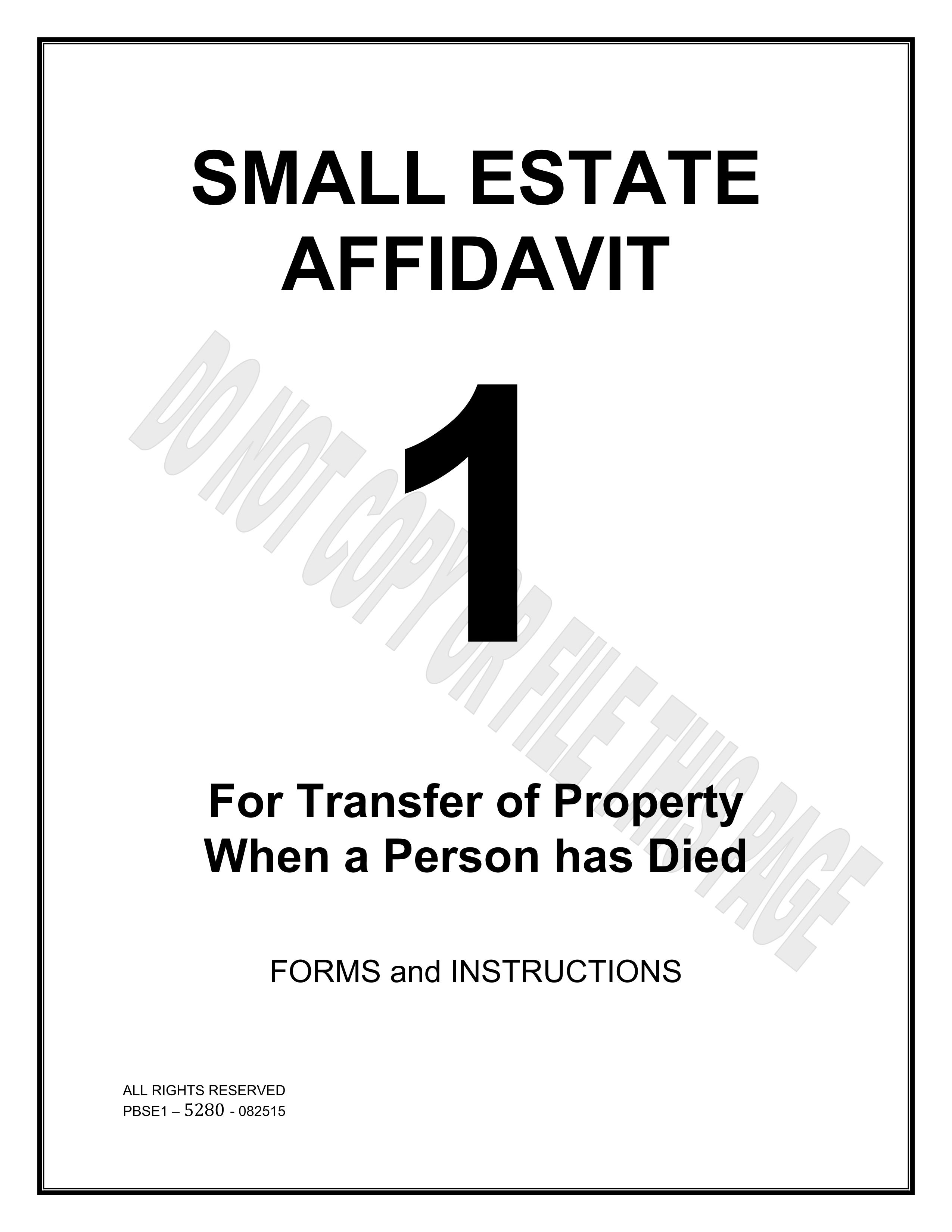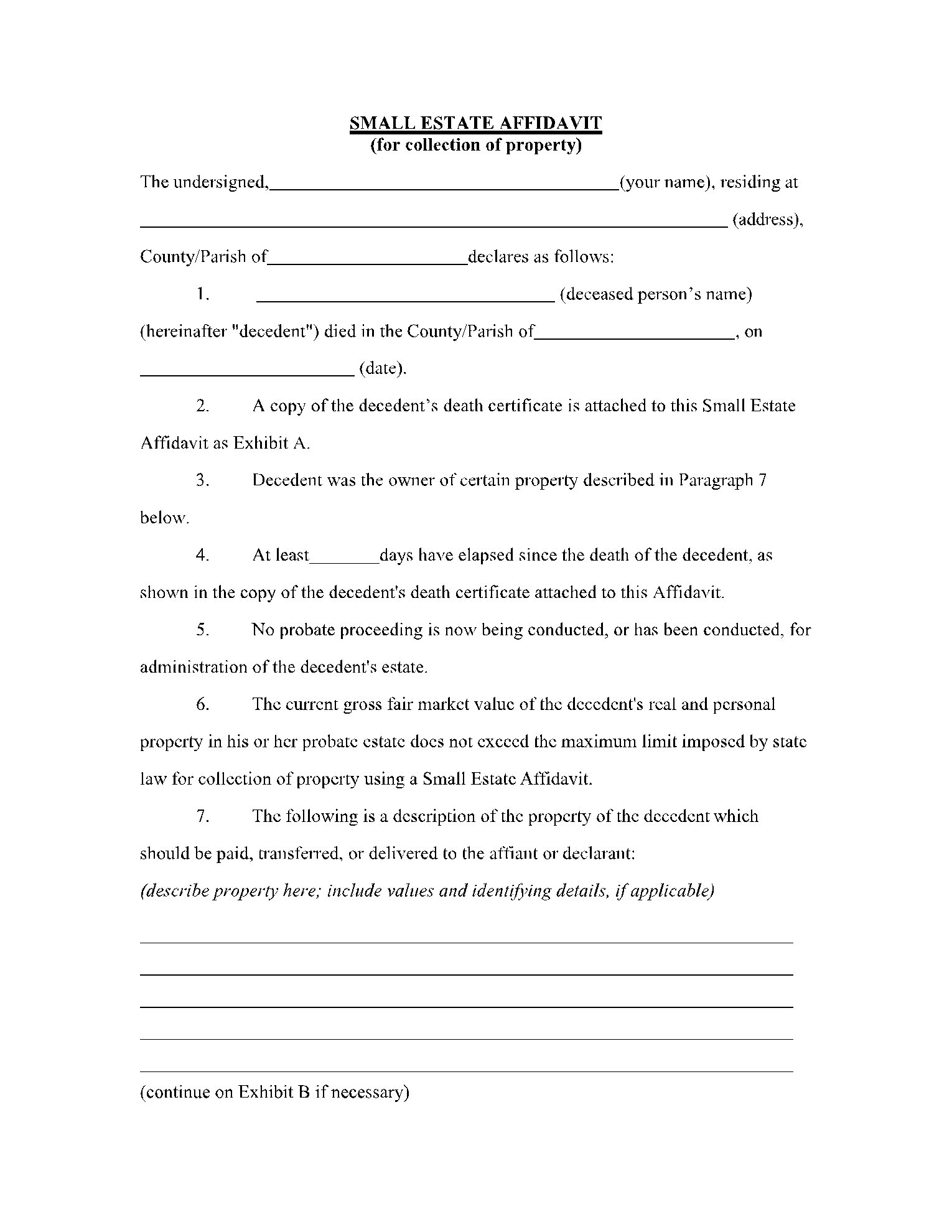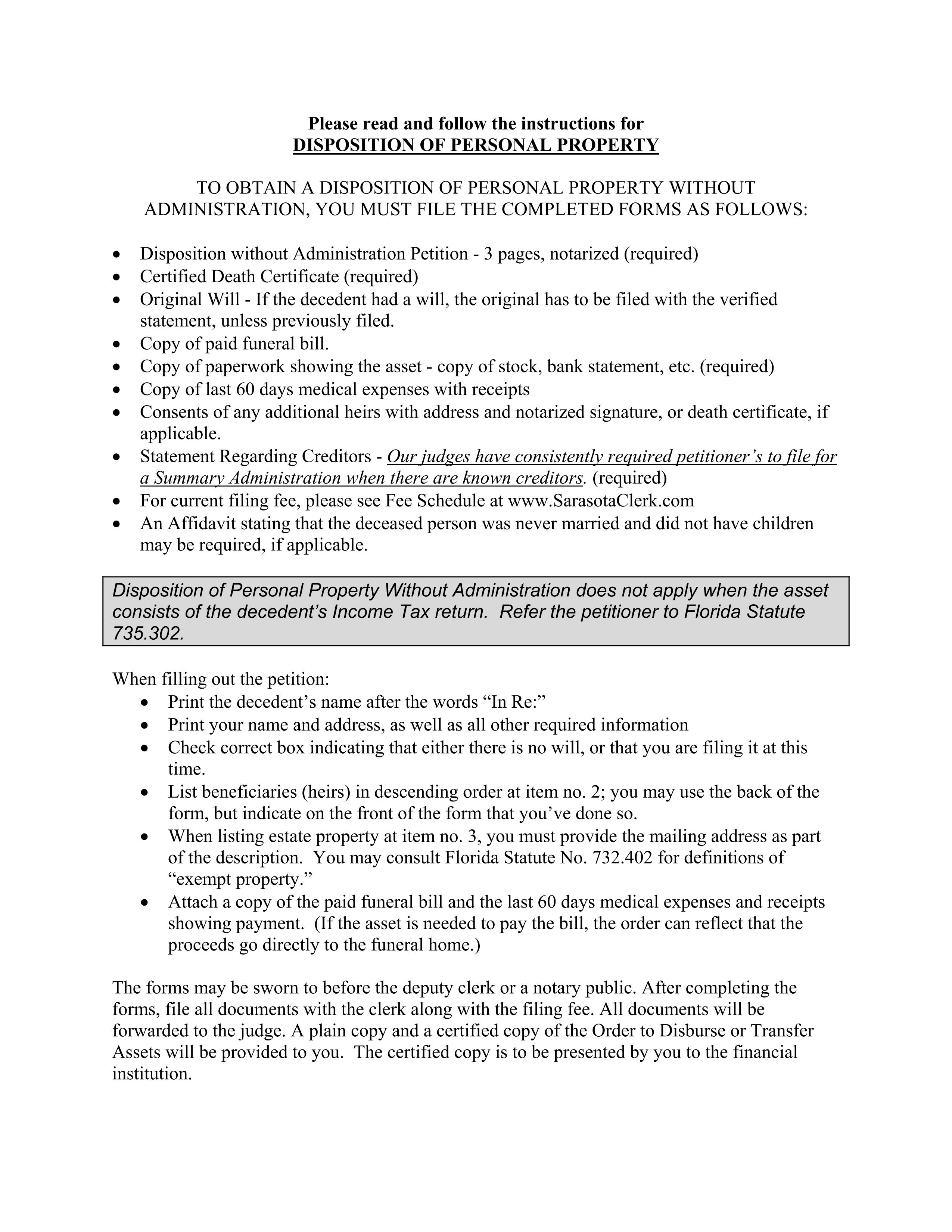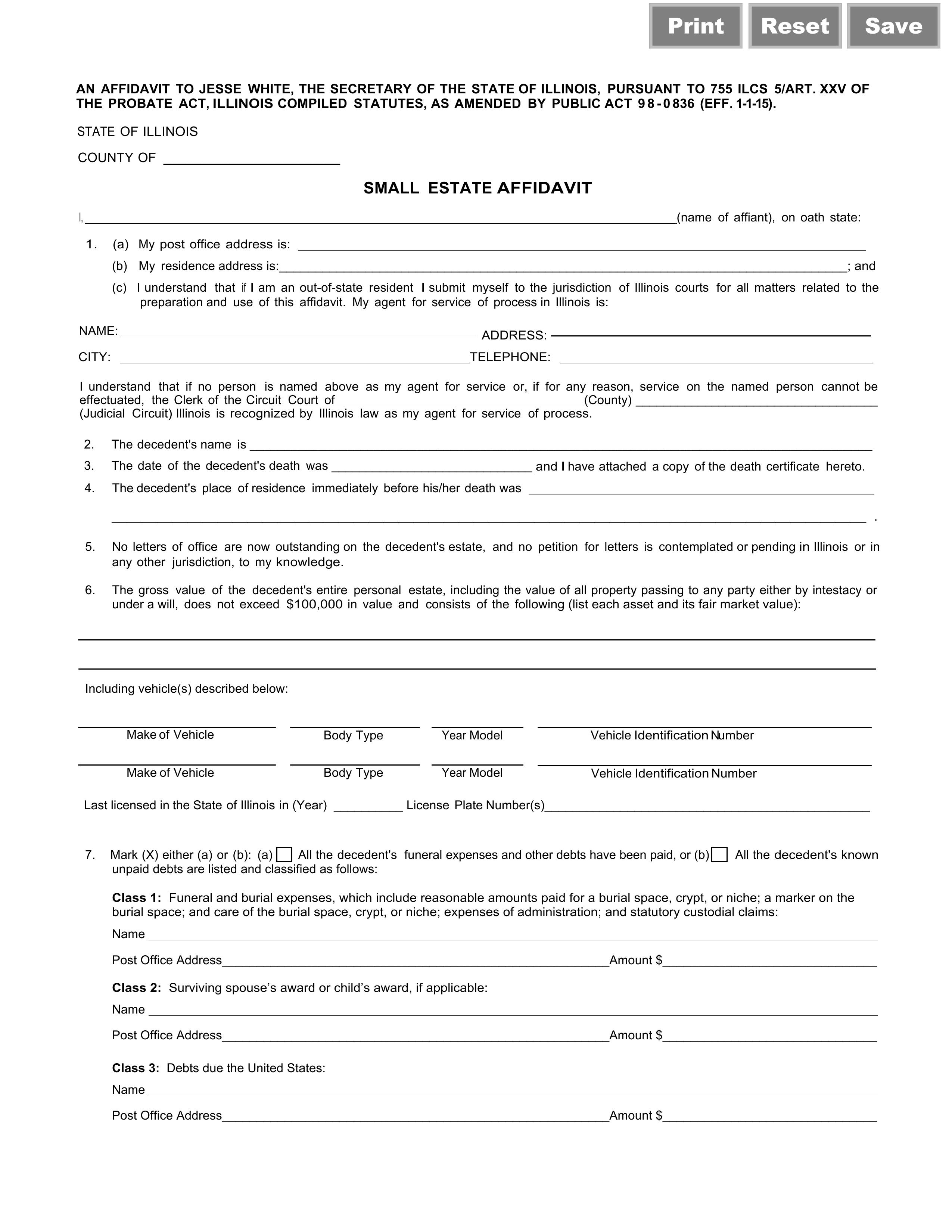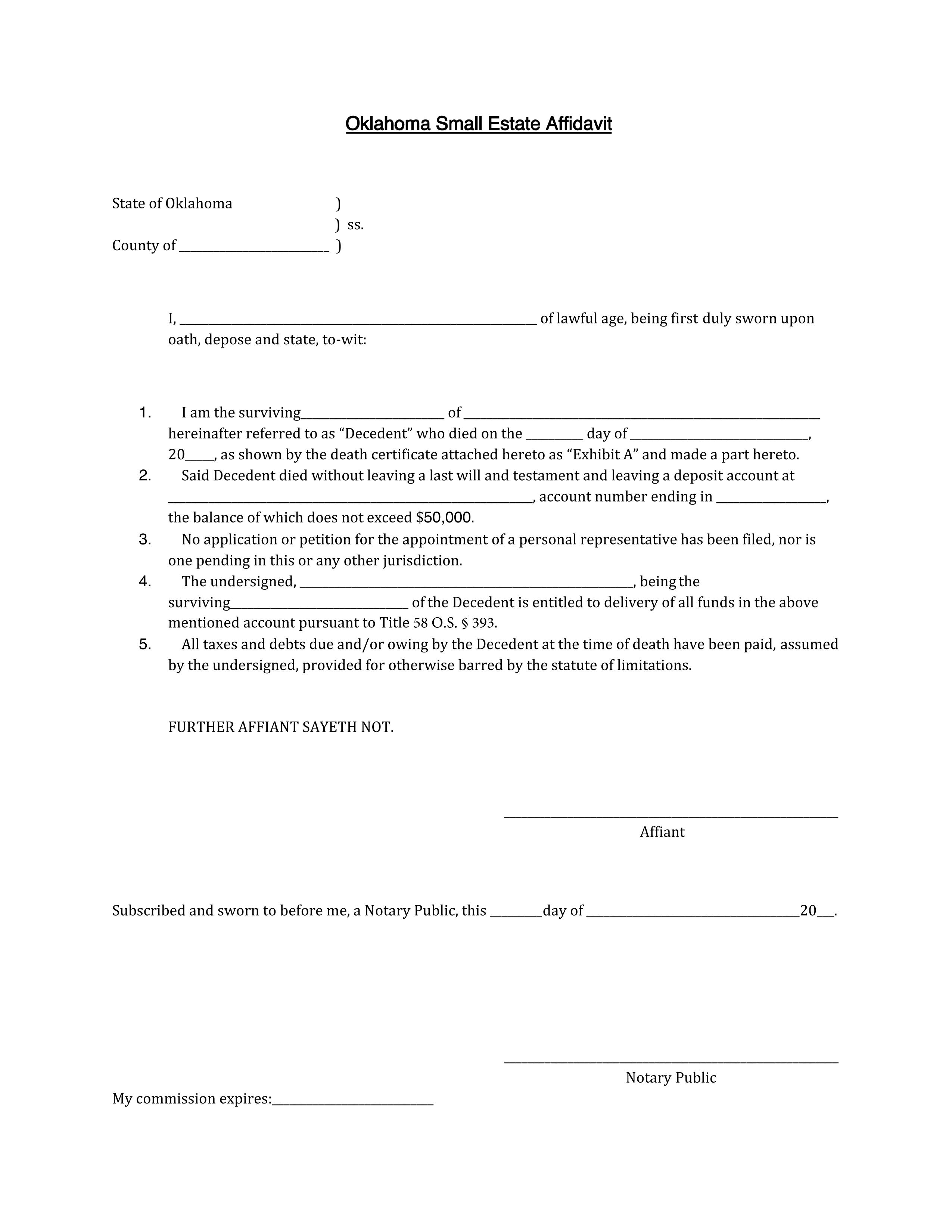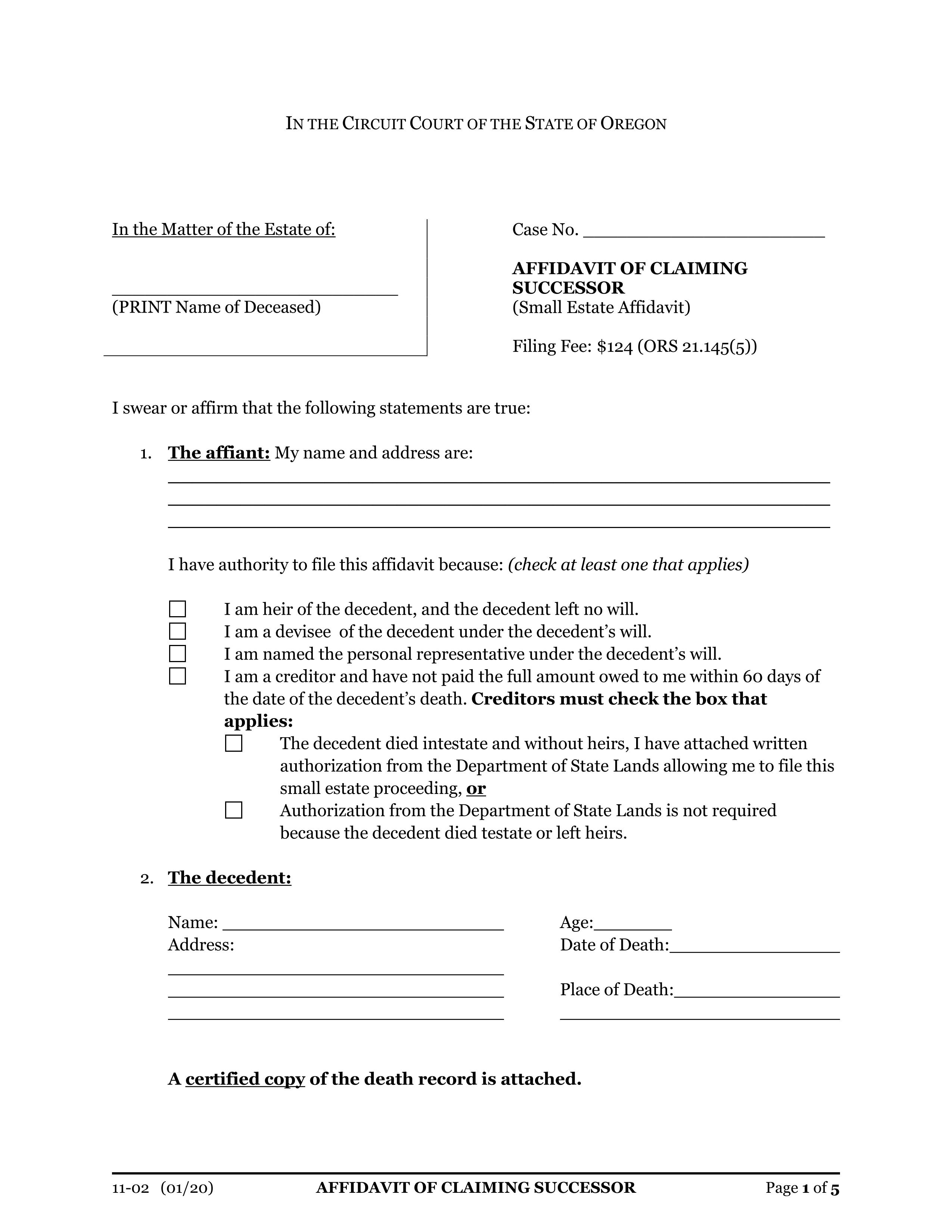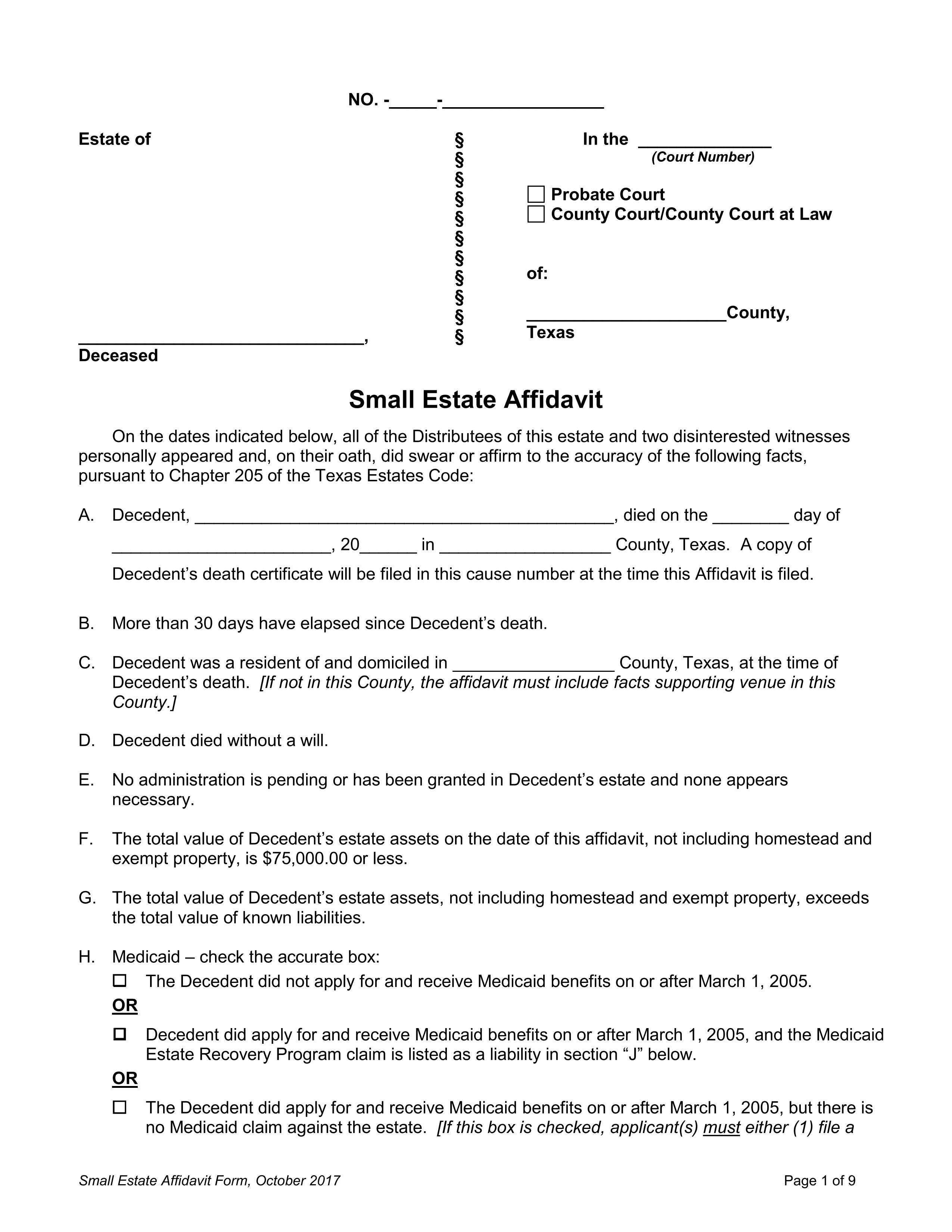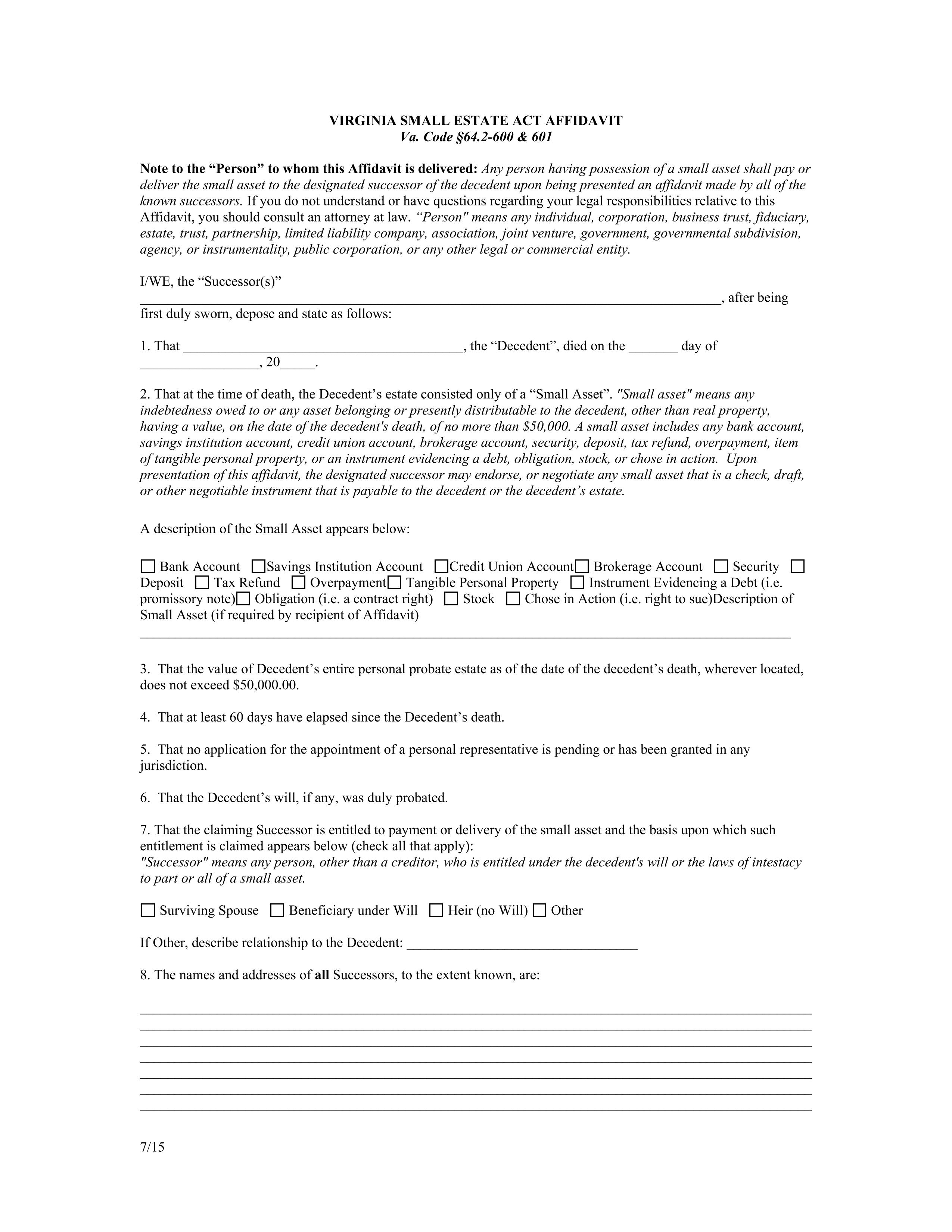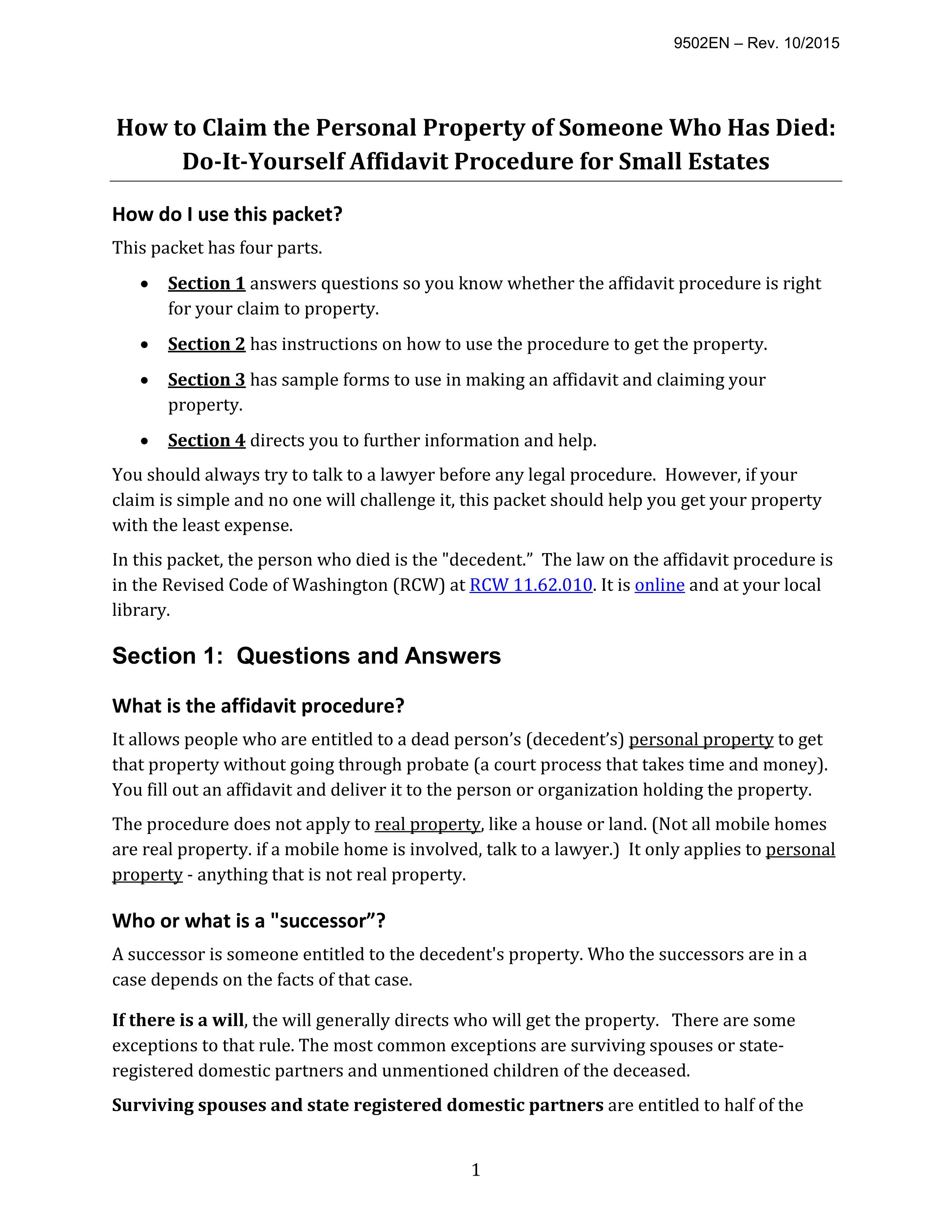The natural course of life is always an unpredictable phenomenon. There might be a situation when you encounter a sudden death of a relative. This situation can be devastating.
However, the unexpected demise has resulted in the unavailability of will or any other related document. There is nothing more stressful than attending the court preceding, especially in a grieving period. Now, you need to swear your connection to claim what rightfully yours in a lengthy formal proceeding. All of this can be avoided by filling out the small estate affidavit Template.
What is a Small Estate Affidavit?
A small estate affidavit is a legal document that includes a signed declaration permitting someone to claim the properties of somebody who has expired legitimately. This claim can be valid when there is no heir or proper will to define the inheritor of the deceased's possessed property, money, assets, or everything else. To acquire the possession of the property, this affidavit can be presented to the executor of the estate form. This executor can be a person, institute (court, bank, agent, or credit union), or anyone in holding possession of the assets.
The small estate affidavit faces variation from state to state. Estate can be declared as "Small" if the deceased's properties fall under the decided threshold of its worth. Each state has set its threshold and determinants. The variation in the states' limits can be observed as Alabama has established the maximum amount to be $25,000; meanwhile, Iowa puts it at $200,000.
Small estate affidavits are used to bypass what’s known as the probate procedure. If a small estate affidavit is possible, it will reduce the cost and lengthy proceedings of probate while also shortening the time required to manage the estate.
What Should I Do Before Get a Small Estate Affidavit?
Before getting tangled in the small estate affidavit form, it is crucial to determine the respective state's rules regarding it. After careful administration of legislation, the following statements must be extracted from the situation:
- State Determinant
The state should put forward the information regarding the maximum value. Details about whether or not assets follow the limit should also be a part of the discussion. The worth will be calculated in the dollar value. Only probate property is considered part of the assets. In the case of a jointly owned asset, they'll be exempted from the affidavit property detail.
- Information Regarding Will
The will represents the beneficiaries selected by the deceased person. If the will is absent, the heir will be beneficiaries, and the estate will be divided among them. Some states allow small estate affidavit form only in the absence of the will. However, others will enable the continuation of the affidavit even in the presence of a will.
The affidavit must be initiated before applying for the probate proceeding; otherwise, it will be invalid.
- Time Limit
It is essential to wait out decided days specified by the state. This period can be of the lesser time of 10 days or lasts as long as two months. This time is vital in accessing any information regarding the deceased's request or assets details.
A Guide to The Small Estate Affidavit Process
A small estate affidavit is a legal statement in writing. CocoDoc has simplified the small estate affidavit template that would make the process of filling out and registering a claim to the new property even more accessible. Following are the guideline to be followed for the affidavit process:
- Identify and Comply with States’ Requirement: The rules, regulations, and jurisdiction of the state will be identified and obeyed accordingly. They may include the worth limit of the assets, period, and governing law, etc.
- Gather the Legal Documents: Organize and acquire the related property documents. The documents can be registration papers for vehicles, accepted art, or any other. The state-issued deceased's death certificate will also be part of these documents.
- Cover Important Points of the Affidavit: The structure and required contents of a small estate affidavit form can vary by jurisdiction. Before you start writing the affidavit, double-check the specifications. Select the best available template from CocoDoc.
Carefully list the details of all the decedent's properties and possessions that will be passed to the heirs. If required, you may seek legal advice.
- Contact & Inform other Beneficiaries: The potential heir for the assets must be reported about the filing of the affidavit. Complete information must be sent through the certified mail, and a receipt will be obtained as a piece of evidence.
- Fill Out the Affidavit: Attach all of the compiled papers along with the filing fee of the affidavit. Email the documents to the court clerk for processing at the probate facility. The clerk will continue processing the affidavit if anything is in order.
On average, it takes 5 to 15 days to accept or reject the filling. The properties can be possessed on the acceptance of it.
Does a Small Estate Affidavit Need to Be Notarized?
The small estate affidavit is a legalized document approved by the state. The affidavit processing needs the clerk or lawyer, member of the judicial court, heirs of the deceased, and corresponding government agency.
Since it is legally binding, it requires to be notarized. However, this requirement varies from state to state. Most of the states need the affidavit to be notarized for its validation. If necessary, the notarization must be carried out as the financial institutions holding the properties may need notarized evidence for claim verification.
Conclusion
Once in a lifetime, an encounter with a small estate affidavit has a good possibility. To be able to understand the process and deal with it effectively must be our priority. This article has pointed out all the related information about a small estate affidavit to complete the transfer right of the property from the deceased to its rightful owners.
